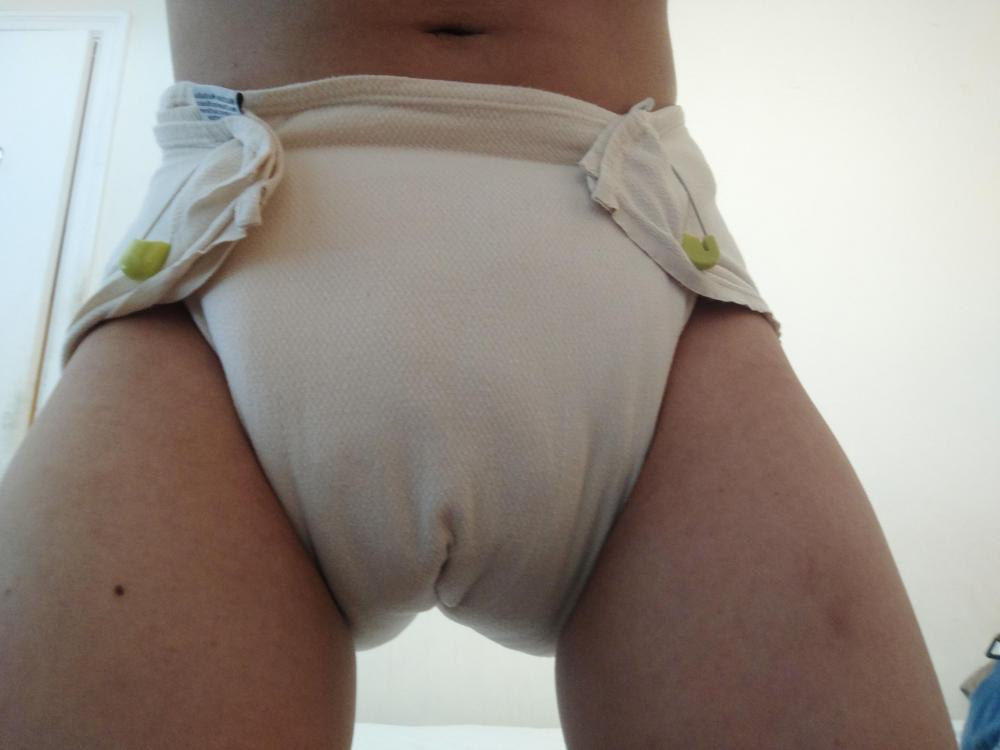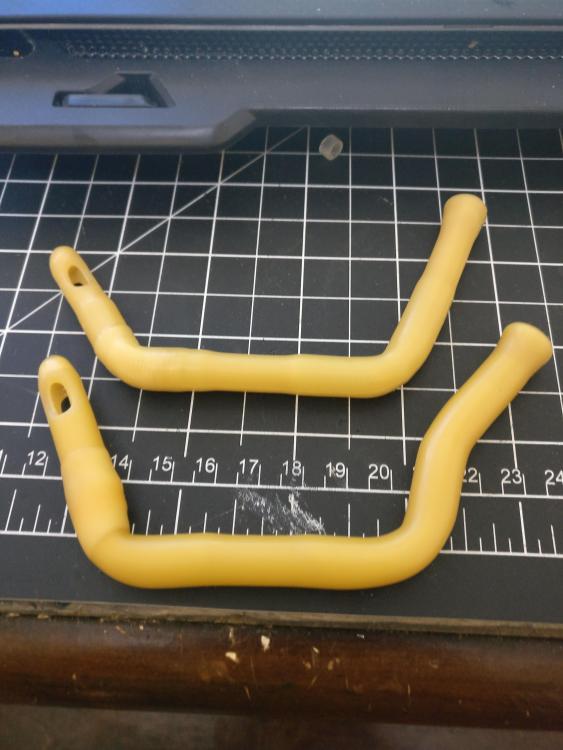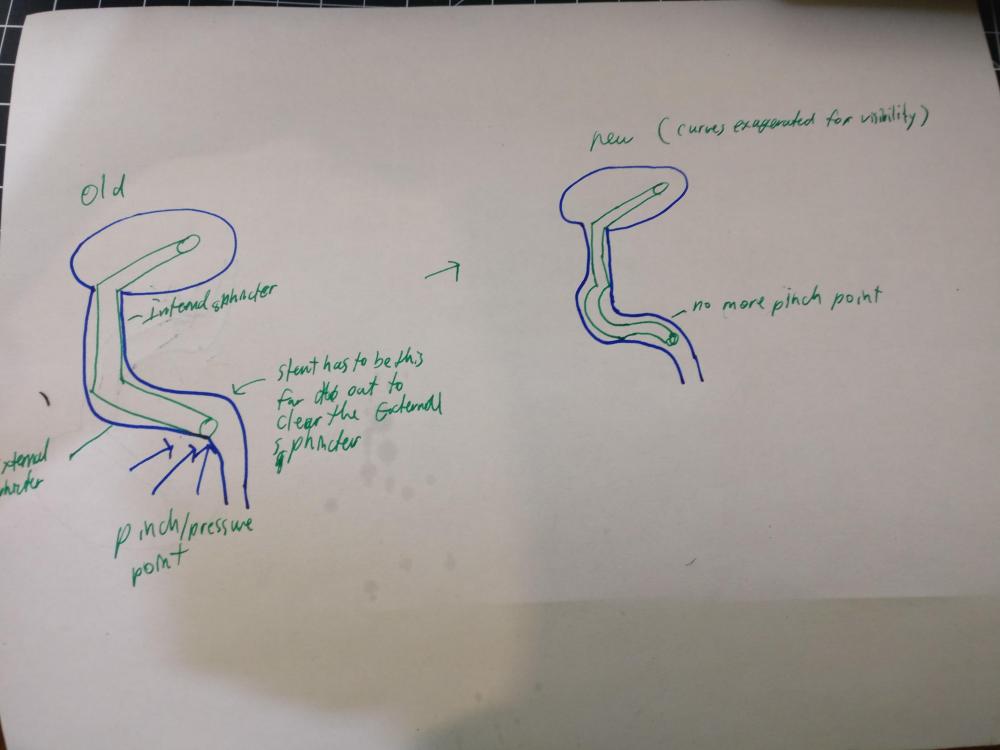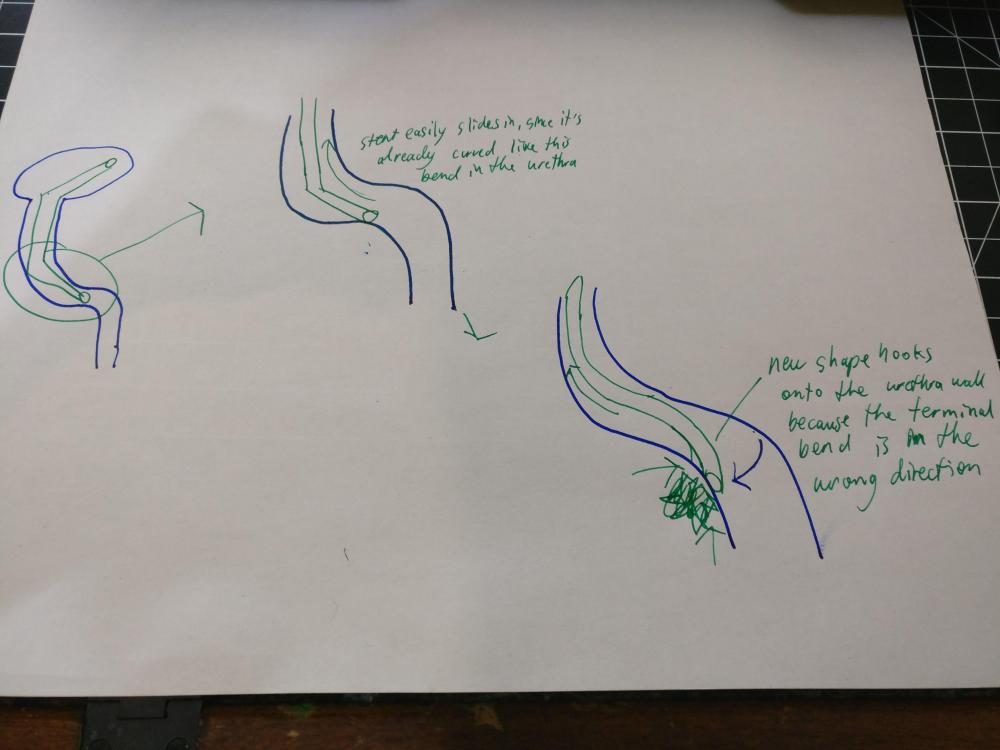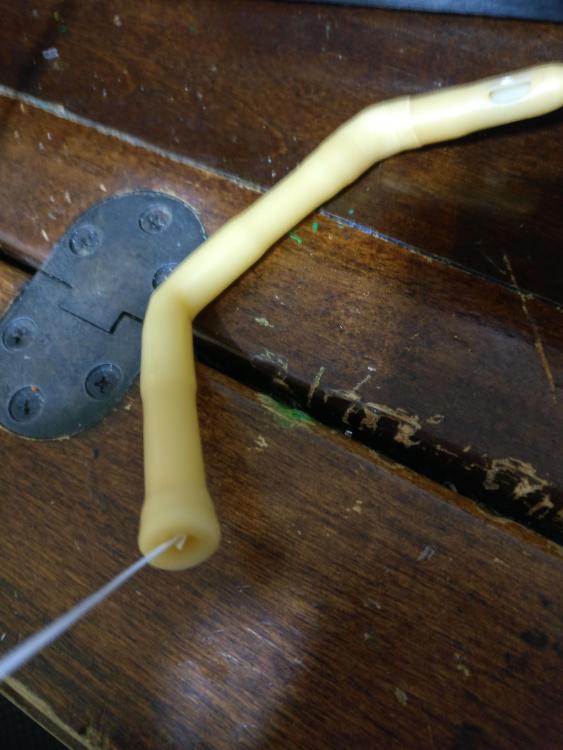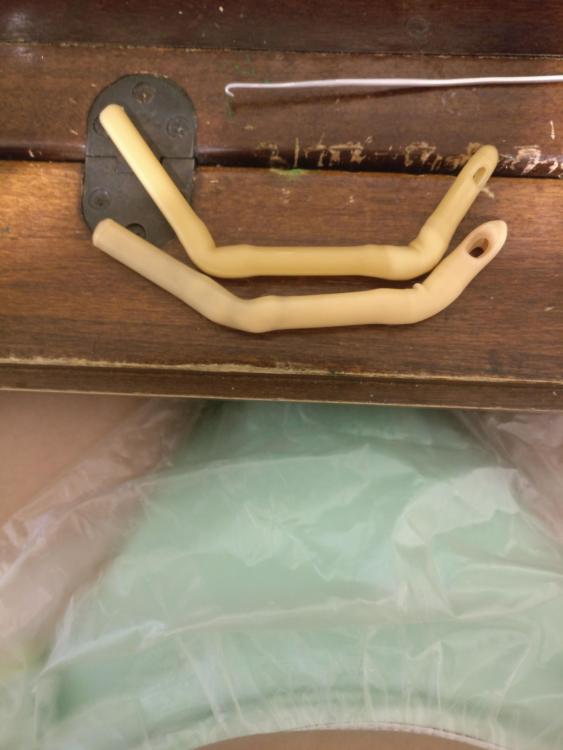 |
 |

qwerty
Members-
Posts
26 -
Joined
-
Last visited
Content Type
Profiles
Forums
Gallery
Articles
Store
Everything posted by qwerty
-
The most padded (in cloth) I have ever been!
qwerty replied to DL-Boy's topic in Cloth Diapers & Panties
You're not truly padded until you can sit on a hard chair and it feels like a pillow I make sure to wear a "home alone all day" diaper whenever I can. The requirements for a proper diaper in this scenario: 1. It must be absolutely impossible to fit pants over it 2. I must not be able to get my feet close than shoulder width apart 3. being able to walk even remotely close to normally is unacceptable 4. being able to sit with my legs straight is also unacceptable It's a great feeling that only cloth can achieve. In the future I'd like to get a larger diaper that I can fit even more stuffers in. I wonder if it's possible to get a diaper so thick that walking is impossible? -
I also use rearz's prefolds. I find that the width is not enough for the length normally. That being said, what I usually do is pin the right side, then hold the other in the right position with my hand. I then pull it up like a pair of pants, tighten the left side as much as possible, then pin. Then I unpin the right side, tighten and pin again. Usually it's done by this point, but it's ok to go back and forth a couple more times. What I do for pinning the diaper is I pull it tight with two hands, and then I pinch the diaper from above with my left hand, such that my thumb is on the inside of the diaper and my fingers are on the outside. Then I pin with my right hand. hope this helps you
-
Yeah that always seems to be the problem area doesnt it. What i've been doing is getting my plastic pants one or two sizes larger. This gives me enough material to tuck it in below the diaper at the problem area.
-
In theory, not too hard. Carve something out of wax, flame smooth it and invest it in plaster. Burn the plaster out. At which point you now have a mold you can pour liquid silicone into. Much, much , much harder in practice than in theory. You'll also need a pressure pot or vacuum chamber for best results. The entire setup may cost $150 to get going. Each stent produced afterwards would only cost a couple dollars, but the startup cost is high. Other than that, it can be done at home i guess. There's probably better ways of making molds for silicone, but this is the easiest one that can make a smooth stent which I can think of
-
Restarting my journey to incontinence and hopefully true bedwetting
qwerty replied to Inconito's topic in Incontinent-Desires
Ooooh this is a topic I'm well versed in. Feel free to ask questions. A great source for info is on fetlife. There's a user there who goes by billytex1 who is very knowledgeable and willing to share that knowledge. Anyhow, when I use catheters, I normally collect it in one of those 2000 ml bedside collection bags which I attach a one way check valve to. I mount this on my belly /front of pants. I find this gives much more capacity, is less visible, more comfortable, and less prone to dislodging through movement compared to a leg bag. I drink plenty of water, and combined with the check valve, I've never had a uti despite keeping having kept the catheter in for months at a time. Anyhow, what I learned from the fetlife user is that it is possible to make yourself incontinent with catheters, but it's not enough to just wear a catheter. You need to slowly ramp up the catheter size, all the way up to the largest size (30 fr). Your sphincter tissue will slowly and permanently expand to adapt to the constant presence of the catheter. However, this requires weeks per size, for the smaller sizes, and months per size for the larger ones. Additionally, you can't take breaks: you have to be almost 100% permanently cathed. Or else your tissue will spring back to its original shape like and elastic. On the topic of bladder shrinkage: I found a clinical study on this topic. Long story short, bladder capacity will shrink down to about 100 ml over a year. This is reversible rather quickly. Past a year, it will shrink dramatically more slowly, something like 8 ml of capacity per month. If you keep at it past this point, the shrinkage appears to be permanent. The fetlife user tells me he has made himself incontinent using this method. I believe this will take at least 2 years to do properly, but it should work. Not a quick solution at all, but supposedly effective. I believe you might? be able to recover control if you really try. But I would not count on that -
Stent 3.1 update: tl;dr : 3 days straight, so far, including nights. Almost no discernible irritation. Much, much more comfortable at night. So it turns out the exact angle and radius of the two bends in my stent design matter a lot. The bend near the front (urine exiting part) of the stent was not tight enough. As a result, i didn't actually get the retaining quality of the design. Stent 3.1 is basically the exact same as 3.0 except with a longer bend in the front. So far, ZERO movement. I've even tried pushing it in to the bladder; refuses to go in. This is fantastic since, in theory, I can ditch the retrieval line. I dont see a real reason to risk it at this time though. The real benefit of this is when sleeping. When sleeping, I found that the previous stent designs would slip backwards a little bit, and whenever I clamp down my external sphincter, the end of the stent is halfway in, halfway out of the sphincter. This causes significant discomfort, and a lot of irritation over the course of the night. Of course, this isn't something I can control since the sphincter naturally wants to stay closed. But now, the problem doesn't exist at all. Much more comfortable to sleep. I think the sleep irritation was the major limiting factor in how long i could keep previous stents in. Stent 3.1 has been in and out for the past week or so. I had to get each bend angle and radius just right. Fortunately, the adjustments were small enough to do just by hand bending the stent, and didn't require building a new one. (good thing too since I'm almost out of the catheter size I use for stents.) So after working the stent till it just about melds with my urethra's natural curves, I've arrived at the completed version 3.1 Man, what a difference a well fitted stent makes. For the past few days, I've been the most comfortably stented I've ever been. Before, the standard for me was "tolerable while moving, comfortable when still", but I've been routinely forgetting that I have a stent in at all... until of course I feel a trickle of pee start. Which then turn into a stream, and I instinctively try to stop it, only to find that I can't control it at all. With the previous stents, I think about a week was the limit before it became a little too uncomfortable to sleep and stuff, and I would end up taking it out to be able to get to sleep for the night. Another thing I've really noticed is that stent irritation is significantly worse when you're dehydrated. Seriously, it felt like the urethra was being rubbed raw by every movement. This quickly went away once I drank enough water. Anyone else notice this? Well either way, I'm not about to complain about an excuse to stay well hydrated, and therefore more leaky I've been doing some heavy exercise in some pretty brutal heat yesterday, and the stent felt just fine though. So I think I'm definitely making progress. I had never imagined a stent could be so comfortable I would not notice it was in unless it was causing me to leak at that moment. To think that I believed I'd reached the limit of stent comfort with v2! Had I stopped there, I would never have been able to stay incontinent for more than a week, and there would always have been some discomfort with it. Just goes to show we should never stop trying to make things better. I'm hoping for the best with v 3.1 though. So I hope this case inspires you all to keep working on stents!
-
If you compare real absorbency (rather than the very misleading "ISO absorbency" that disposables like to advertise), cloth is about 20% less absorbent than disposables, for a given thickness level, if you take the thickness of a full disposable. Basically, disposables get bulkier as they get wet, while cloth stays the same. If you compare a full cloth diaper vs a full disposable of the same size, the difference is about 20% less for cloth. With my standard daytime cloth diaper, I change every 2-4 hours, but I wet wayyyy more than a normal person, so I'd say it's closer to 4 hours for a normal urine output level. Either way, changing often is only a mild inconvenience to me, since the cost of changing is negligible. So it doesn't matter that I'm using more diapers.
-
That's one of the reasons I like cloth diapers for those trying to go 24/7. When washed with a modern high efficiency washing machine, the ecological impact is a fraction of a disposable's, not to mention the cost savings. It's also convenient to not have to worry about how to manage disposal
-
I'm done talking now I promise: And now finally, here's now much empty space I have in front. 2 rolls of duct tape, a box of microscope slides, can of contact cement, NATO filter, bottle of scotch, and can of wd-40. I should probably mention the normal sized pants have forward facing leg holes, but the large ones do not. And yes, I did make sure I'm not wearing them backwards, because I know for a fact that's something I might do Anyhow, do you see my point now? These proportions between the front and back fit are so awful I feel they can't possibly have been designed this way. That's why I'm wondering how you guys who are more experienced do it?
-
The not-so-practical diaper: This is what I wear when I don't have to interact with people. At home alone, ect. I have to change less this way, and there's also the advantage that there's absolutely no way I'm forgetting I'm diapered with this thing on. It's made from a rearz prefold and a bunch of stuffers. Doesn't look that bad from this picture, so here's a size comparison And here it is pinned on That's about as close as I can bring my legs together when wearing this thing, which is one of the reasons I like it. Another few points: -So the shell on this one is made from a prefold. I find that with rearz, their xs is too small, and s is too big. This shell is an s. I also have xs, which I often just fold up into a stuffer for this diaper, which you can see in the pic. Well, the extra size of the s comes in handy because all the stuffing inside takes up enough room that it fits. -The capacity is about 3L+. -Of course, I can, and often do make it even bigger when I'm in the mood for it. What I've shown you is the baseline configuration I use. At that point it's not even about the capacity any more . Doing this sort of thing might be somewhat extravagant with disposables, but that's why cloth is great. Unlike a reasonably sized diaper, there's so much padding in here that the padding in between the legs is comfortably firm, and doesn't really compress. It really changes the way I walk, sit, and even stand. Every step I take, the diaper definitely makes itself known. So that's why this configuration exists when the practical diaper works just fine. Also, I conveniently get to salvage my mistakes in purchasing the rearz prefolds. And now, finally on to the original point: the rubber pants And yes, I know I'm really ranty, and I can't stop because I have no self control. These are the ones I use with my practical diapers. They're rubber, and I also have plastic ones. These actually fit somewhat well, but a little small on the back side, as I mention in my original post. So here's the back. Notice the part where the thighs begin. It looks fine now, but what isn't so visible is that the rubber pant's material is all used up here. They just barely cover the span of the diaper's bottom. And if the pants shift at all, for example from me sitting and sliding just a little bit, leaks will come really easily. Additionally, the waist barely covers the top of the diaper, another common leak point. If i try to pull them up, it straight up exposes the bottom of the diaper. If I cover the bottom to a degree I'm comfortable with, the waist is exposed. So I should just get bigger ones right? well... Here is a picture demonstrating just how much empty space is in front. I'm holding the waist open with my hand to show you guys inside. In there, I can fit: 2 rolls of duct tape, a can of contact cement, and a NATO gas mask filter. Rubber pants continued: These are the rubber pants I use with the oversized diapers. As you can see, they are extremely baggy and oversized compared to the usual ones. To be fair, that is literally exactly how they were advertised. However, they still just barely fit for my large diaper in the back and waist. however... Here is a pic showing how much empty space is in the sides. Keep in mind it's this much both sides And here's the empty space in the front/bottom
-
@Little Christine Yeah I just now realized how not knowing my diaper system makes things difficult lol. Alright there's lots of pictures, so I have to split this across several posts because of the 15 mb total file limit. So here's my explanation: The way I use my diapers is based on a "shell and padding model". The shell is the outer part that holds things together, and the padding does the bulk of the absorbing. This allows me to adjust the capacity to whatever level I want. In practice though, I have my "practical" diaper, and my very large ones. The Practical diaper: This is what I use to wear under clothes, when there are other people around/ I'm in public. The beige flats in the back are birdseye baby flat diapers, which happen to be the exact right size for me when unfolded, as used as if they were prefolds. The white is the padding, which is gauze baby flats. Those ones are about 5-10 cm smaller than the birdseye, so they're only good for padding. I use 3 flats for the shell, and I usually use 5 or 6 for the padding. You can't see it in the picture, but the way the padding is layed out, I have 2-3 flats folded in half, and then in half again to make a square. This is placed at the front of the diaper. Then, 3 flats are folded in half, and placed on top, which is the white that you see. This way, I have more absorbency near the front where it matters more (and also bulk in the front tends to be a bit less visible than in the back, imo). Put together like this, it's basically a roundabout way to get a standard adult prefold. A couple of points here: -From experience, the capacity is about 1.2 litres, which happens to be the actual practical capacity of a daytime abdl disposable. -Why not just buy an actual prefold for all this trouble? Well first of all, this costs less. The stuffer flats are $1 each, and the shell flats were ~$2.5 each. So about $13-14. Meanwhile, a rearz prefold would cost $20, and have around a third the capacity. Second, this system is adjustable to any capacity I want. And finally, if any flat wears out, instead of the whole thing being trash, I can simply reassign that flat to being a stuffer instead. So nothing truly wears out until it's literally falling apart. This makes my diaper stash's longevity quite impressive. -If I were to follow "proper" proportions for making my mock prefold, the stuffers would be folded in thirds instead of halves, so that the stuffer and the the two flanks would each be 1/3 the width of the diaper. This is how it's usually done. However, I do it this way because the half folded stuffers fully cover my bum when I sit down, which is vastly more comfortable than having the padding awkwardly covering half of each cheek. It makes any seat comfy! Also, this configuration folds up quite nicely for transportation or storage: Here's what it looks like pinned on.
-
So I've got a question for some of you experienced cloth users. It seems to me every pair of rubber pants I own is deliberately made to fit like trash. Please hear me out, now. The most important component to a leak proof fit, to me, is the part of the leg holes that covers the back of the thigh, and lower butt. Basically, the part of the diaper that contacts the chair when you sit. This part always seems to not be large enough relative to the rest of the rubber pants. If this butt part of the rubber pants is large enough, I can tuck a little bit under the diaper, and the whole system is practically leak proof. However, whenever a pair of rubber pants is large enough for this, I find that the front and sides are wayyy over sized. I could practically fit 2 rolls of duct tape down the front side, for example. And this is even with the fact that my diapers are made about twice as thick in the front as the back. The sides being baggy I can understand as these are made to fit many body sizes. However, the back part being too small compared to the vastly oversized front seems like it would be a problem no matter what size of person, since it's a fundamental mismatch of two parts that don't seem to belong on the same pair of rubber pants. How do you guys deal with getting rubber pants that fit well, and what is your preferred system of rubber/plastic pants that prevents leaks the best for you?
-
It's great to hear you've experienced your first significant success! Now it's just a matter of incrementally improving comfort and security until it can be worn as long as you like. Do keep us updated, and stay drippy!
-
@Strangedude9990 It looks to me like the end that goes in your bladder is much too short. Try making it 2-2.5 cm longer and see if that improves things.
-
I absolutely agree that the total length is critical. I think it has to be right to within no more than 2mm of error or else the stent will be very uncomfortable. One easy way I've found to find the right length is to take a catheter, or stent you know is too long and insert it. Then, clench and unclench your sphincter (try to "stop the flow" of pee) and you should be able to feel the movement of the sphincter with your finger. Move your finger along while doing this, and you can basically map out exactly where your outer sphincter starts and ends. Then, make your stent such that it reaches about 3 mm further than the end of your sphincter, and it should be perfect. A good test at this point is to try clenching again. If the stent is too short, you will feel discomfort when you clench, as the sphincter tightens around the sudden end of the stent. If, however, the stent clears the sphincter completely, then you should not really feel anything different than if the stent were not there. @Strangedude9990 I recommend you give this method a try, in order to get the length of your stent right in one go. Also, I'm not there to see it in person, but from the pictures you've posted, it seems to me like the ending of your stent is sticking/flaring out a bit, and will eventually cause irritation. Maybe try to get it smooth and in line with the rest of the stent? @Millerlite: It should ideally not be painful. However, for beginners it usually is lol. This is mostly because inexperienced ones do something wrong, such as inserting too fast, without enough lube, too large, or their cath just came with sharp eyelets that they didn't soften first, or they did everything right, but tried to insert into an already sore urethra that needed time to recover. As for myself, there's no pain at all when inserting, and I would hesitate to even classify the feeling as uncomfortable at this point. But that's because I have experience, and my urethra has gotten used to having stuff inserted. The takeaway though, should be this: it will start out uncomfortable, but should not be painful. It will get much better with time, so long as you listen to your body. Also, mini stent 3.0 update: I had had it in last week, when it became uncomfortable after only a few hours. This was very strange, especially since the discomfort was in front of the stent, where there was no stent at all! Well, it turns out I messed up with the retrieval line again. Learn from my mistakes guys: don't used #69 industrial grade bonded nylon thread. It's rough. Duh. Today, I switched back to floss, which I washed the mint off of this time, and in just the few hours I've had it in, I've already noticed a big difference. We'll see how it goes this time
-
Update: Stent 3.0 So after the stent migrated AGAIN at night, I decided it might be time to revise the design. Two things I wanted to improve: comfort, and non-movement. I've come up with two simple changes to the classic stent that improves both of these factors. Old stent on top, new on bottom. A retrieval line was added after the pic was taken. As you can see, there were 2 changes. Firstly, the bottom bend (the one on the right) is nearly 90 degrees, and has a larger radius. The larger radius is for strength, as my tube will kink and collapse if I bend it too sharply, and this reduces the elastic springiness of the bend, which sorta defeats the purpose. Additionally, having a soft wide bend will allow the urethra to naturally wrap around it, which will probably do something to prevent movement. We're not relying on that though. The second, more important change, is that there is a third, reverse bend after the second bend. Note that those two bends are actually one piece of tubing. I think it's important to have a stiff connection between the two bends, as the geometry is essential to the movement stopping effect. I've made big strides in comfort, but that only means my stent time is measured in days rather than hours. Some of you may remember that I was having an issue with the retrieval line rubbing at the entrance of the stent. Today, I think I figured out the solution. I've implemented the solution, and it's feeling really comfy, but I've said that before. Since I'm dealing with small discomforts which build up over days, I can't reliably get an immediate gauge on the situation any more. So far though, I don't feel the telltale light rubbing of the old design. Here's a diagram that shows why I think this will help. So as you can see on the left, the stent tip is pointed at an awkward angle. It will either cause a pressure point on the bottom, as shown in the diagram, or the stent could slide down to the right a bit and cause a pinch point on the upper/right wall of the urethra. This also causes the urethra wall to partially block the stent hole. I've found that the flow has improved with this last design. With the old design I could sometimes walk just a few steps to grab something before urine leaked out. Well, I found out the hard way that that won't work any more Either way, since the tip of the stent is now in line with the urethra, in theory, no more irritation. Maybe I'll get to start measuring my stent time in weeks or months now. Or maybe this'll be the last comfort change needed to go indefinitely. Let's hope. Now, on to stent non-movement. The diagram explains this one pretty well. Basically, the old stent didn't reeeeally have anything to stop it going in, now that I think about it. All it takes is for something, anything (especially while you're asleep and unaware) to slide the outer tip of the stent into the external sphincter, and the next contraction of it will actually send the stent backwards, straight into the bladder! For me at least, the external sphincter (ES) goes right up to the base of my penis, which is somewhat inconvenient. Because of the sharp bend in the urethra right at the base of the penis, that's as far as a stent can go, unless you want it to go a good 3 cm further, or else the tip will rub and poke like hell along the sharp bend of the urethra. So for that reason, the margin between the stent tip and the end of my ES is less than a cm. This probably explains why I lost the stent twice in 3 nights. Must have been a new sleeping position or something that pushed it the less than 1 cm require to get it lost. With the new design, I'm actually quite confident that it won't move into the bladder, but I'm still gonna stick with a retrieval line. Especially since I've now found that it's not really a source of discomfort. I may ditch it if, say, I can keep this stent in for at least two months (here's hoping!) without incident, but even that's a big maybe. The advantages of not having a retrieval line are small compared to the risks. Maybe this will help some of you out, but either way I'd love to hear how your stent journeys are going. To a wet, leaky future!
-
Hey everyone, So it's a really good thing I've got a retrieval line, because I woke up one morning with the stent deep in my bladder. Could have been an er trip without the line, but since I had it, it was a 5 minute inconvenience. I've had the stent in and out for the past few weeks, but as of today, I'm hoping to see how long I can go continuously. The holy grail is, of course, InD's experience, where he managed to spend an entire year totally incontinent. I've been having less problems with the stent comfort wise, and I'd say even sleep is about as easy stented than not. The stent is still working as intended, acting like an on/off switch for my bladder control. Maybe someday soon I'll get to the point where I just don't feel like turning it back on... I've recently managed to figure out a 100% cloth diaper 24/7 cycle. This basically eliminates my ongoing costs for being stented, and the total cost was less than it would have cost to go 1 month in disposables. I've always preferred cloth, but now I'm at the point where I only need a few disposables on hand for emergencies when I'm out and about (it's impractical to carry more than 1 change of cloth). I think cloth a very natural choice for 24/7 diapering purely because of the massive, massive cost savings. So how is the stent journey going for everyone else?
-
1. Yeah that was more of a contingency if one were to go without a retrieval line, which I now think is a bad idea. A retrieval line is much better for preventing loss of the stent. And I absolutely agree on the every bladder is different thing. This is probably the biggest problem that we stent builders face, since what works for others usually can't just be copied and be expected to work. If you wouldn't mind answering some questions, How do you keep the retrieval line from getting pulled taut when you get an erection/ shift in certain positions? I find that my line tends to grip on the opening of the urethra and this causes the line to be tensioned inside my urethra whenever the urethra path gets longer for any reason. I believe this to be a major source of the problem I'm having with the retrieval line.
-
Another update: So I did a bit of an experiment this morning. I put one finger at the base of my internal sphincter for safety, and tried to see if the stent could be pushed into the bladder. I wanted to see if my stent was 100% safe or not. I found that with some force, the stent would indeed start making its way into the bladder. So now I know that a retrieval line-less stent is not entirely safe. Out came the stent. In light of this new information, I strongly advise against line-less stents unless you really know what you're doing. The specific scenario I'm worried about is as follows: I'm sleeping, but then wake up. During my sleep, the end of the stent has worked its way slightly behind the end of the outer sphincter, such that when I wake up and reflexively clench, the force of the sphincter clenching will now push the stent up into the bladder. Normally this doesn't happen since the stent is made specifically to stick out past the end of the outer sphincter, but there's no real way to prevent it from moving at all. Shifting throughout the night may give the stent the slight push it needs to be in just the wrong position. So I started thinking about the retrieval line problem again. I thought maybe if I made the retrieval line stick out from the inside of the stent instead of the outside, the irritation would be made much smaller. (see picture). However, I remember that there was irritation along the entire line, everywhere it touched the urethra. Oh well, one problem at a time. While I was attaching the line to the stent however, I realized what the source of the retrieval line irritation was: I was using floss as the retrieval line. Floss is coated in minty stuff. And yes, I do feel like a right idiot. The safe-ifficated stent has been in for several hours. I'm feeling nearly no discomfort. Let's hope it lasts
-
I use a small aluminium hook I made out of a tig rod. I just hook into the folded end, since that conveniently already has the right geometry
-
sebt, I usually fold the end of the catheter over into itself, creating a very smooth ending. I recommend you do the same, and see if that fixes your problem. There's just no way to get a smooth enough surface from a cut end. In fact, I'm seeing that most people who build their stents go for this method of ending the stent. See roo's picture above for what I mean about the ends being folded inwards
-
3 day Update: So the stent's been in this whole time. The most it's moved this whole time is less than 1 cm outwards, from me bearing down on my bladder particularly hard. Because of this I'm now pretty confident this stent won't get lost in my bladder. There was some initial discomfort, but it's been going down over time, which further reinforces the idea that the retrieval line is the source. This is somewhat unfortunate, since it's always better to have a retrieval line and not need it. However, now it's pretty certain that a retrieval line makes this stent design un-useable for more than a few hours, at least for me. That being said, there is good news. First of all, the stent is really comfortable. Whereas before, certain positions and movements would cause sudden surges of discomfort, now, there's none of that. This stent is pretty much at the level of me not noticing it's there, unless I'm looking for it. I haven't taken it out once since I put it in, and I have no desire to do so for the foreseeable future. Let's see how long it ends up staying. The other news is that now that I've had a chance to wear it for longer, I've found its effects to be simply amazing. I can confidently say that I'm well and truly incontinent with this thing in. And since I barely notice the stent, and there's no visible retrieval line, this is as close as one can get on a temporary, reasonably safe basis. I'm constantly dribbling. Everything I do has to be planned around this. The dripping doesn't stop or slow down just because I'm walking to the shower, or in the process of changing. If If I realize my diaper is leaking and I haven't prepared a new one yet, I'll have to lay down a tower beneath my feet while I fold the diaper. When I walk out of the shower, I have to use a tower to catch the dripping. Another advantage of this is that I can nearly constantly feel this, which is something a catheter can't replicate. However, this dripping only happens once my bladder is slightly inflated, maybe 20 ml. This amount changes based on my position though, so depending on when it is exactly, there may be some urine in my bladder. Urine especially pools while sitting or lying down. Because of this, I also experience significant stress incontinence. Walking definitely empties my bladder over 10 or so steps, and I can feel a small gush every step of the way. Certain movements, coughing, ect. also cause a small gush. The best part though, is that after a few days, my body has gotten used to operating with the stent in. My body seems to have accepted the stent into the urinary system, and is working with it instead of against. Remember that 20 or so ml of urine that normally has to fill my bladder before I drip? Well if my bladder fills more than that the micturition reflex actually kicks in, and my bladder starts squeezing! This sometimes happens when I stand, depending on how much dripping my position has allowed. But It happens very often when I'm sitting or lying down. I urinate between 30-100 ml, depending on how full my bladder was allowed to get. My body has gotten used to this function to the extent that my bladder starts squeezing without me having to put conscious thought into it. Normally this would just cause the outer sphincter to clench, and me to feel a stronger urge. But now that the stent is disabling the outer sphincter, there's absolutely nothing I can do to stop the stream. Plus, anything that causes a psychological urge, like being near running water, also causes this to happen. The reason this is great is because in my past stent experiences, I found that positions which block the dripping flow tend to make the bladder fill up quite a bit. It would build up to a noticeable urge, and it was hard to get urination started because my body was unused to the feeling of the stent. As a result, it was easier to just push down with my abdomen to squeeze the bladder, which really defeats the point of using a stent to make urination involuntary. Lying down was even worse in this regard, and this made sleeping stented not live up to the blissful ideal I had of it. But now my bladder has taken up the task of emptying itself through the stent whenever it feels the slightest bit full. This is ideal for sleeping stented, because I don't have to think about it at all, and there's no distracting urge to pee keeping me up, which is something that's bothered me all my life. Furthermore, there's just something about a true urination stream, not just dripping or a small gush, which you have zero control over. And lastly, this is the most true, baby-like form of incontinence. Your body urinates in small, but significant chunks. It goes when it wants, and you have no say in the matter. You are blissfully unaware, until the very moment you feel the slightest urge, and you feel the urine begin flowing, and the wetness spreading. As I said, we'll see how long I end up keeping it in this time. Only time will tell if this stent design has been perfected to my body, but based on the past 3 days, I'm hopeful. I think this stent just might be an indefinite on/off switch for my continence. Best of luck to those of you still working on your prototypes.
-
So I just recently finished gathering all the parts of my cloth diaper system, so I just put my stent back in now that I'm ready for some 24/7 diapering. I'm going to try to refine the stent so that I can wear it 24/7, ideally making it comfortable enough that I barely know it's there. I've found that with cathdiap's design, which I'm calling the "original", that the retrieval line causes significant urethra abrasion. Especially right where the front of the stent ends, I've found I always get sore there in short order. It has something to do with the way the urethra bends around the end of the stent, and thus the string tends to be pulled tight there. So the ideal design involves no retrieval line. This is of course risky, since there's no way to remove the stent if it migrates in. If we can make a stent that doesn't migrate though, this problem will be solved. Over the past week or so, I've been wearing my stent with a retrieval line, which I can't do for very long without discomfort. I did this to make sure that even throughout my daily activities, the stent does not migrate at all. I went through several modifications of the stent to make this possible. I've found several keys to this: 1. don't skimp on the length of the back end (the part in the bladder). Make it at least 3cm long. This makes it so that the stent hits the wall of your bladder if it ever gets pushed inwards, and thus this will help prevent migration into the bladder. Don't make it too long though, or else it will always be hitting your bladder wall, which is rather uncomfortable. This might also make the stent not fit properly, if it can't make it far enough into your bladder (see next point). 2. The middle section's length (the section between the 2 bends) has to be just right. This way, the stent actually hugs the bend of your urethra and this makes it much more secure. Same applies for the angle of the bends themselves. 3. Make the bends relatively stiff. Knowing what I do now, I have to caution against roo's approach of using springs, if you want to go line-free. It still works fine if you do have a retrieval line. If the bends of the stent can change shape, there's significantly less holding power. This particularly bad since your urethra is stretchy too. Both the stent and the urethra being stretchy make it so that the stent isn't being held in place by anything in particular. However, if the bends are stiff, the stent is like a key, which only fits well in a single point along your urethra. I think the front bend (the one that will rest outside of the second sphincter) is the most important. Make sure the bend is between 70-90 degrees, as this mirrors your urethra's bend. Also make sure you use a bit more stiff pipe than needed, such that the straight sections surrounding the bend are also stiff for about 1-1.5 cm. This way, the stent is really locked in at that location, and is unlikely to want to slip into your bladder. The combination of points 2 and 3 point to what I think is the most important principle in this kind of stent: the stent should, through trial and error, be shaped to exactly fit the 2 sphincter region of your urethra. The stent should hold this shape reasonably well, especially at the 2 points that it bends. This way, through the springiness of your urethra, the stent will only want to come to a rest at a single point in you. This way, it will not migrate. So far, I've been wearing the stent all day without a hint of discomfort, while normally I would be starting to get a bit sore by now. The stent has not moved at all, and we'll see how it goes from here. I'll try to update tomorrow to see how sleeping goes. Hopefully I've got the perfect dimensions this time, and this stent is 24/7 viable
-
Just wanna let you know that your springs need to be made of 316 stainless specifically. Stainless steel only stains less, hence "stainless" and not "stain-never". Specifically, most kinds of stainless will rust over time if they're exposed to an electrolyte solution, i.e. urine. 316 is known to be biocompatible though, and is therefore used whenever implants and such are made. That being said, I like the general idea. The way I made my stent, the plastic tubes that make the bends were heat-bent, and are somewhat springy, but not like actual springs. I think making the bends with springs has the potential to not only make insertion easier, but also improve rentention. The springs would allow the stent to conform to your urethra's shape better. We should keep exploring this option
-
Hey guys, it's been a loooooong time since I posted, but I finally have an update. So I took a break from diapers for a while, but earlier today, I just suddenly reaaaaallly wished I was wearing one. I'm sure a lot of you can relate to that. And that reminded me that I still hadn't perfected a stent. I finally got around to getting it built, and I'm happy to report that it has solved the problems I was previously having! So some of you may remember that I was planning on using a larger catheter as the base for my stent 2.0. I tried that with the 30fr you see on the bottom, however, this one had some problems. You may notice that the bend angles are kinda shallow, and this caused the stent to migrate occasionally. Additionally, the size of the stent caused discomfort too. Normally 30 fr is fine as a catheter, for me, but since a stent involves the catheter suddenly going from 30 fr to 0 fr (as in, the end of the stent), the larger the catheter, the larger this sudden transition in your urethra. For stent 3.0, I used a 26fr, which was able to fit the same larger 4mm plastic pipe that the 30fr fit, so no loss there. I also made sure that the bends had a sufficient angle, and the stiffness to hold the angles. This resulted in v3 being totally locked into place when I slipped it in. No matter how I move, or how hard I try to push it out, it doesn't move one bit. I think this shows how important both the angle and location of the bends are in this design of stent. To all those who are just starting out with their first stent, don't give up if it doesn't stay put, and just keep adjusting till it does. I also found that stent 2.0 terminated at exactly the wrong spot, which in combination with the way I fold my diapers up, caused a hot spot that was quite uncomfortable. I use cloth diapers which are made up using baby flats. I found that the baby flats, unfolded, fit me perfectly, much better so than the adult flats, which did not fit no matter which way I folded them. So to give my diapers capacity, I fold some more baby flats up as the padding, and use an unfolded flat as the "shell". Since cloth needs to be really bulky to have good capacity (which is exactly why I like it), I like to make the pads only be half the length of the diaper "shell" placed about in the middle of the shell, such that there is zero bulk on my backside. This eliminates the "diaper butt", significantly reducing visibility under street clothes. I find that a bit of bulk near the front side is much less visible, especially when you wear baggy pants. Additionally, this places most of the bulk between my legs, which give me that wonderful waddly feeling. However, stent 2.0 terminated exactly where the edge of the pad starts, and the pad's edge pushes up against my urethra a bit, and this caused irritation in specific sitting positions. Stent 3.0 solved this problem by being 1 cm or so longer on the bottom, so that the 2 edges no longer overlap. Having used the 4mm inner tubing, the flow issues from v1 are solved. I can happily report that this stent is resulting in an ideal (as boyhood put it best), drip-drip-drip-GUSH! I also found that the retrieval line from v1 was causing a small amount of irritation. Additionally, the presence of the string sticking out sorta reminds you of the stent's existence, and breaks the illusion of real incontinence. So instead, for v2 and 3, I cut a small slot in the inner plastic tube nearest to the bottom. This way, a small hook can be inserted which latches on to this notch, and enables retrieval without a line. It also makes retrieval without the specific tool impossible, which is always a nice feature. Once I leave the house with this stent in, I'm well and truly incontinent, and I can't do anything about it. In the picture below, you can see v3 below, and v2 above. At the very top, you can see the small retrieval hook that I made out of a tig welding rod. Both the angle and size of the hook tip need to be pretty specific to work, so this is effectively a "key" to the stent and my bladder control. You may also notice that I'm appropriately dressed for the task at hand ☺️
![[DD] Boards & Chat](https://www.dailydiapers.com/board/uploads/monthly_2021_11/DDweb-02.png.0c06f38ea7c6e581d61ce22dffdea106.png)


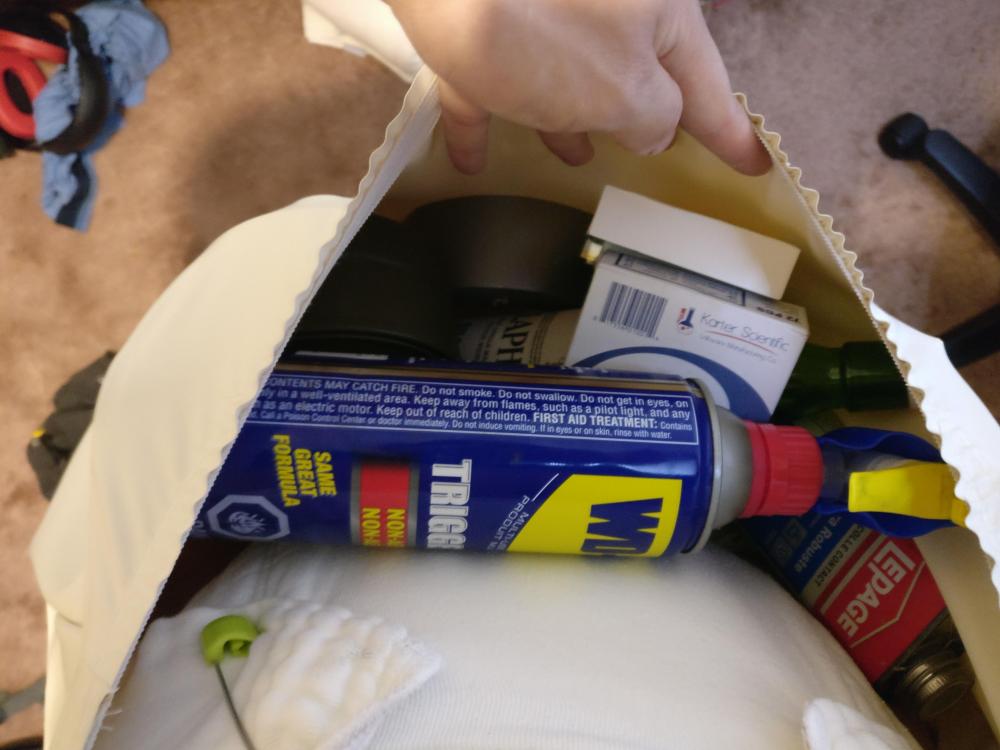
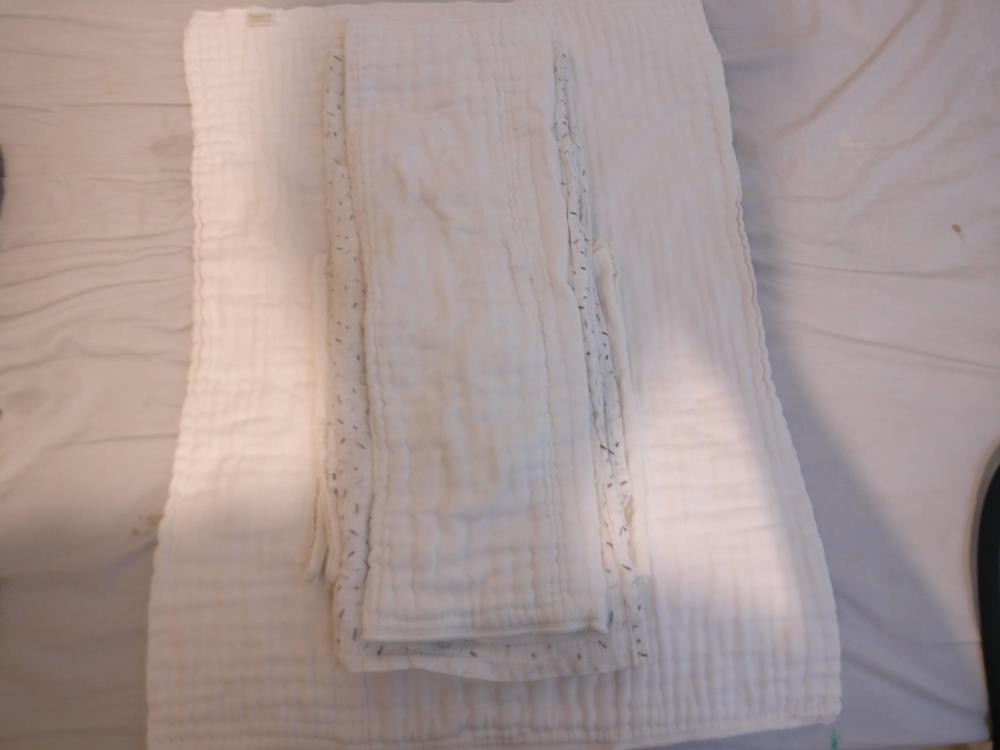
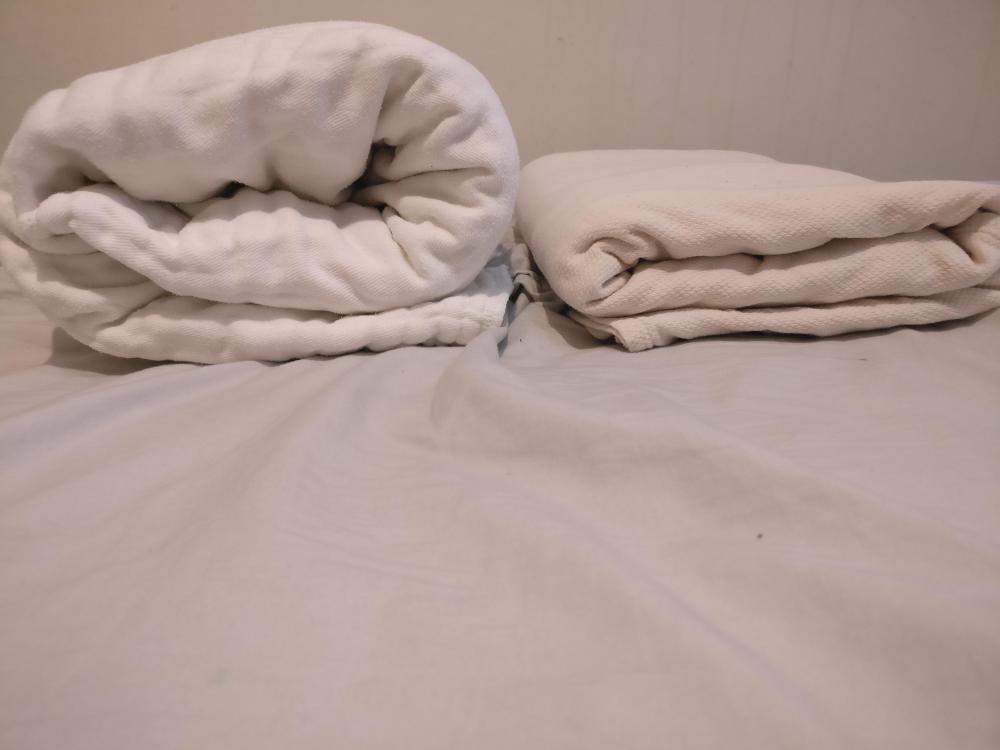
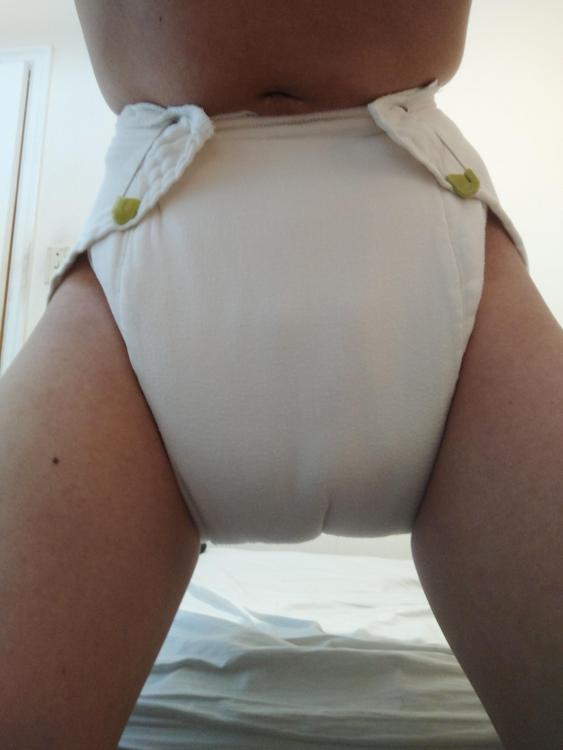
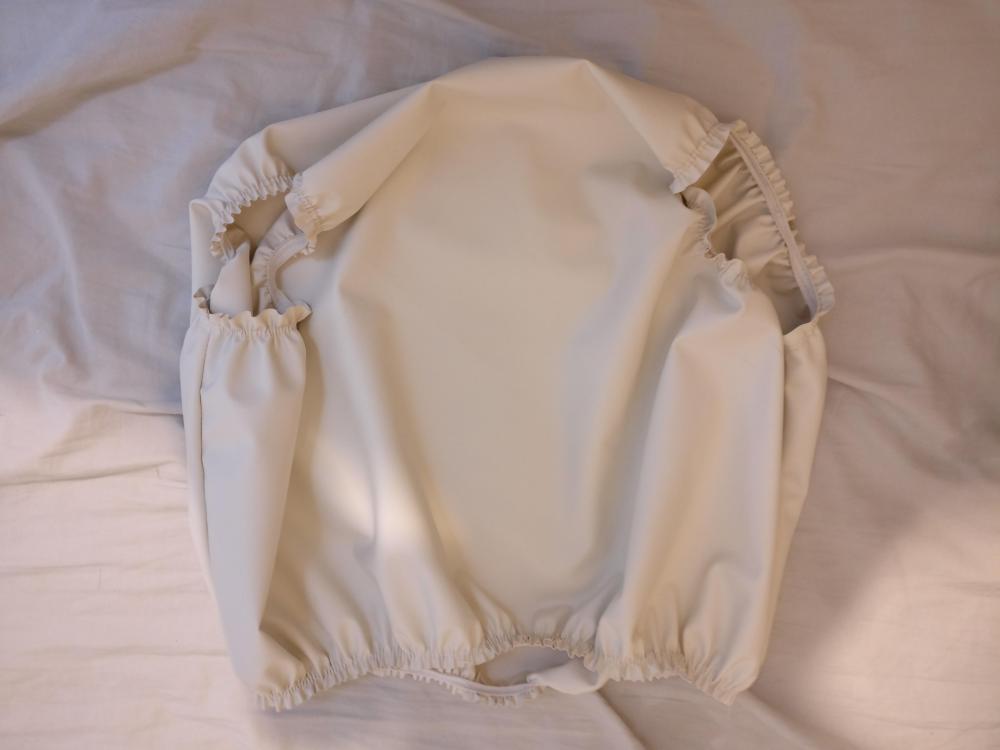
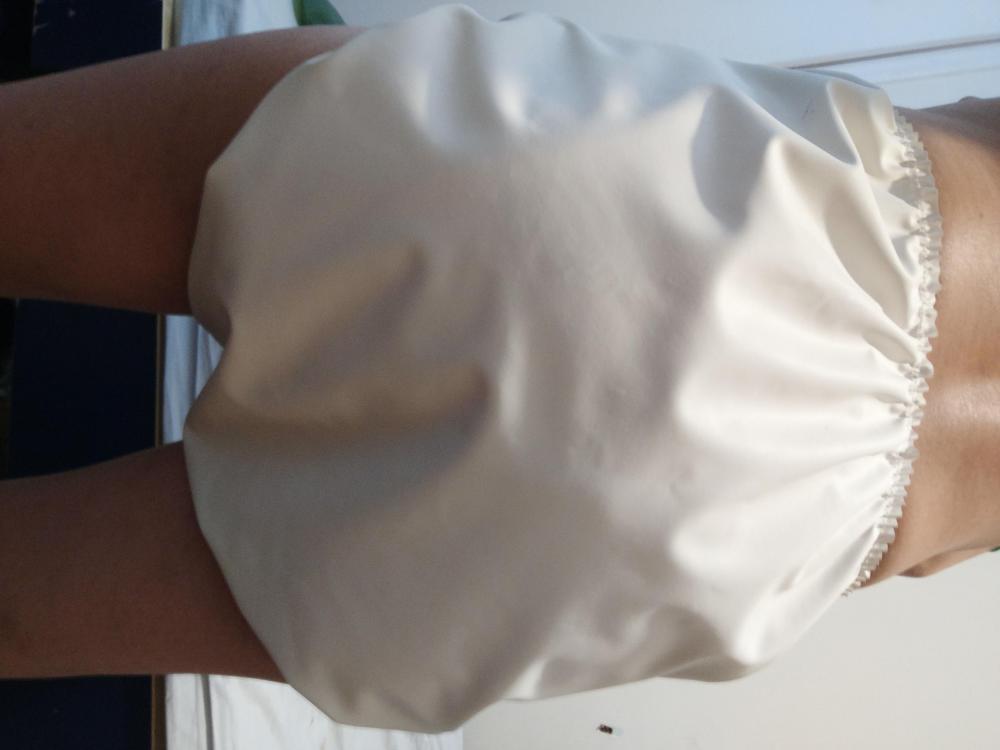
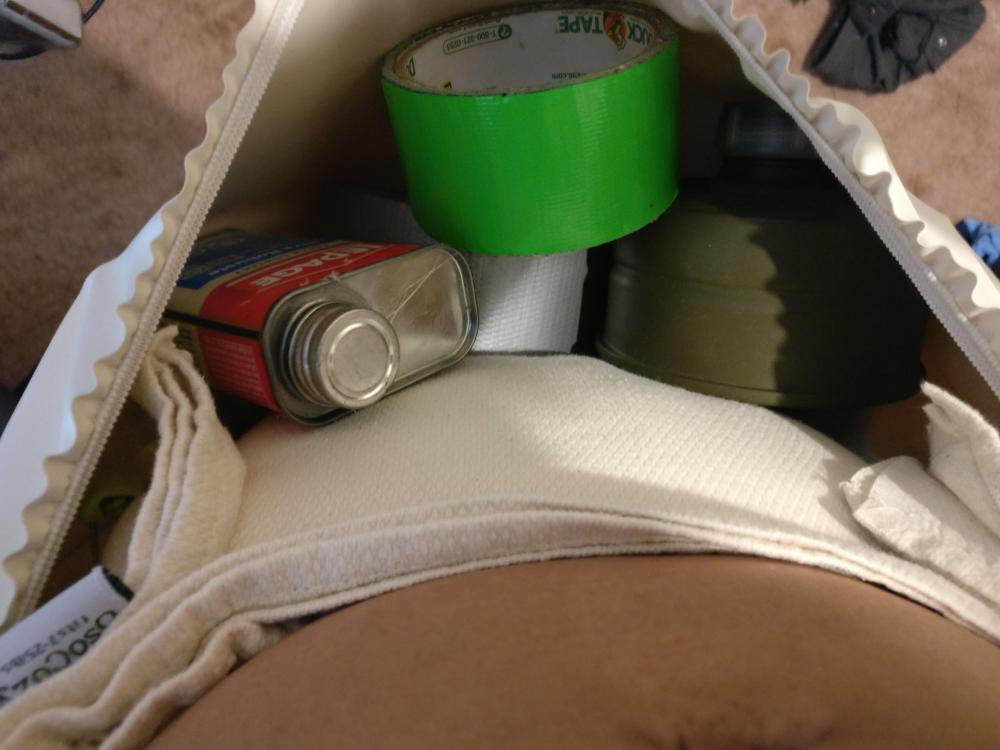
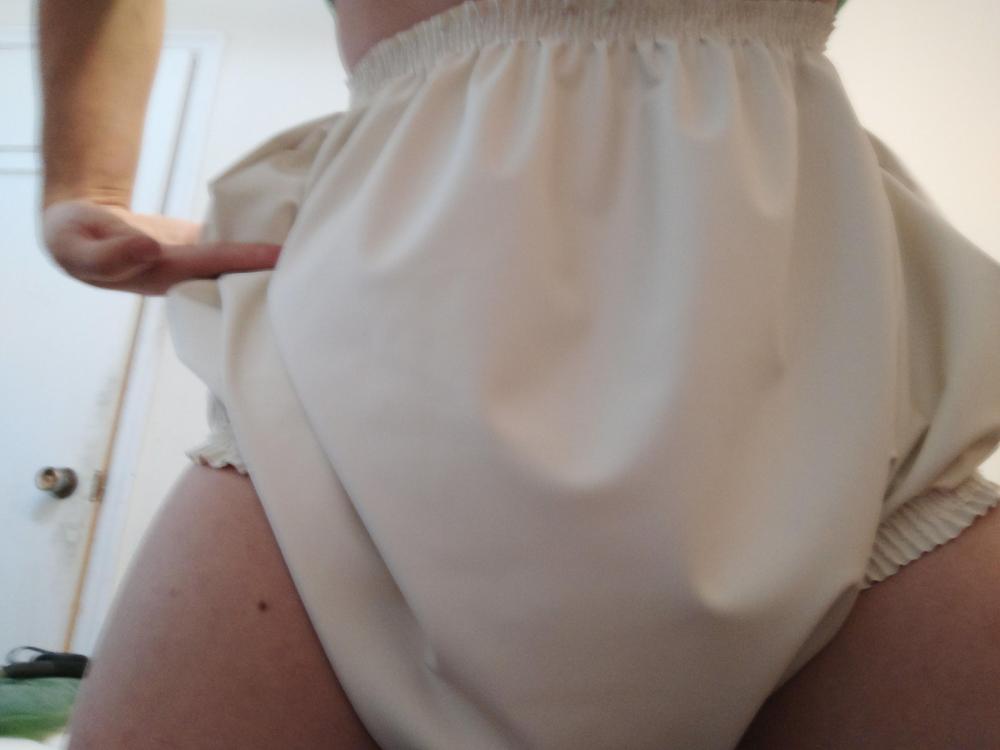
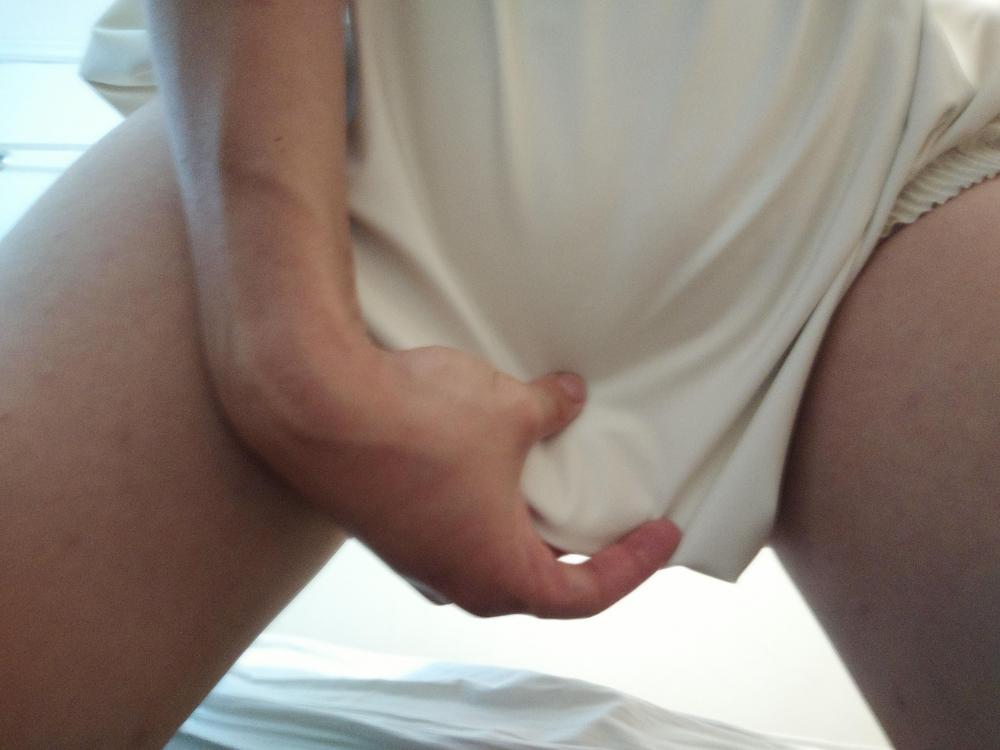
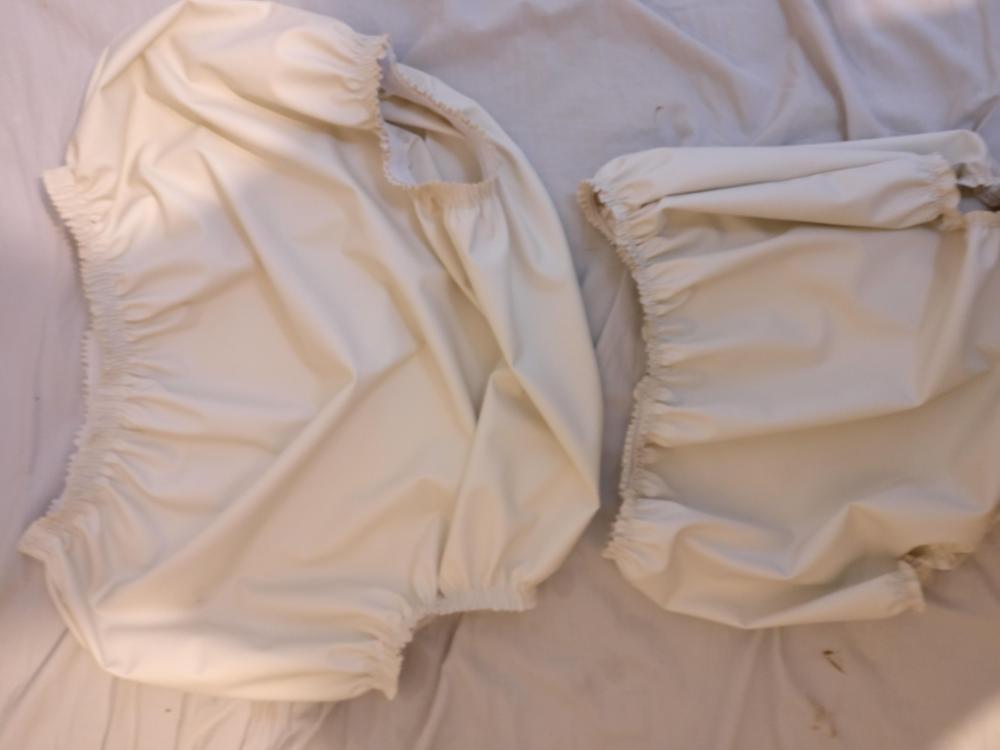
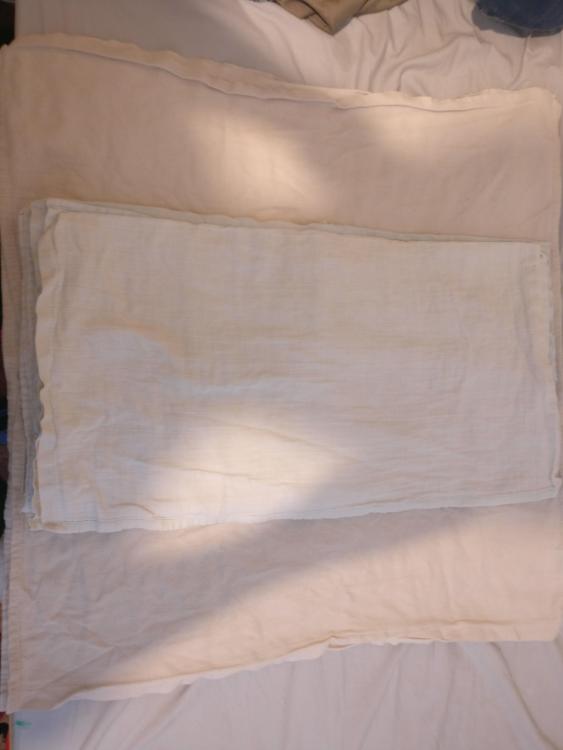
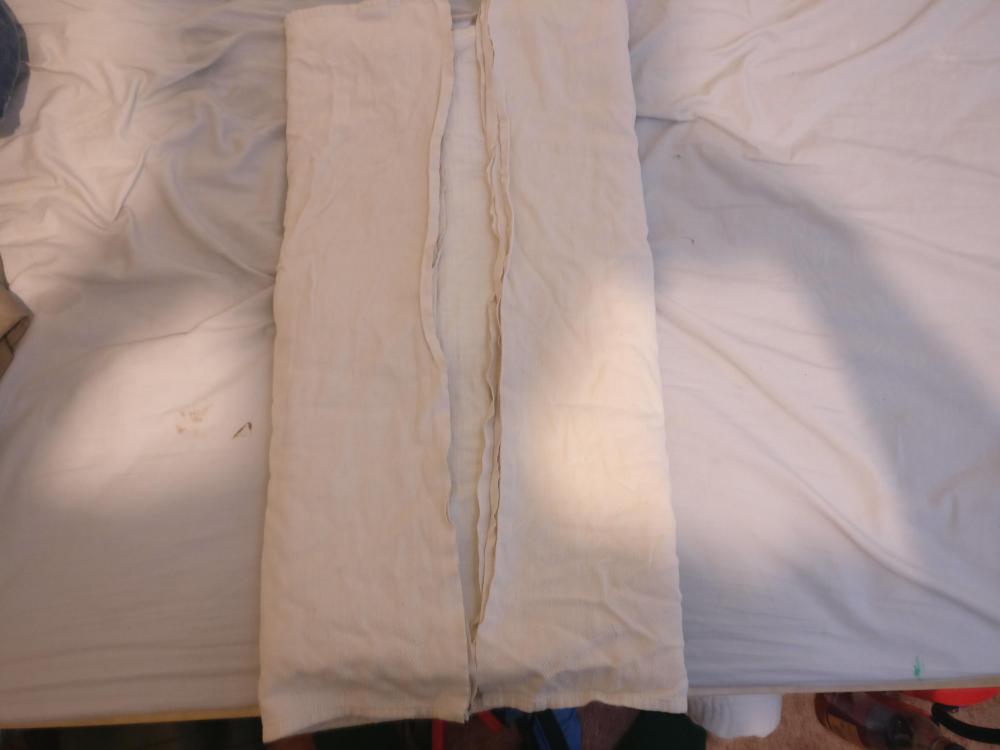
.thumb.jpg.c35048e756b8253212a8fc7ddb1be2d1.jpg)
